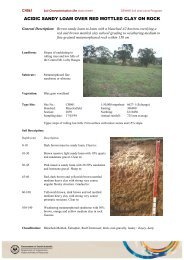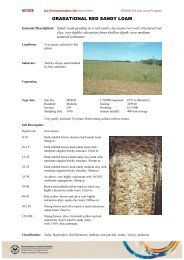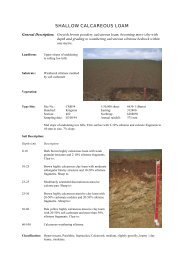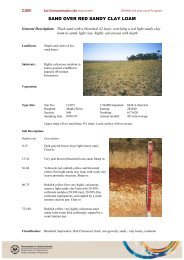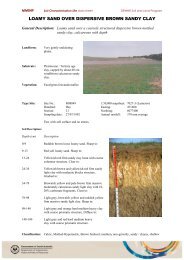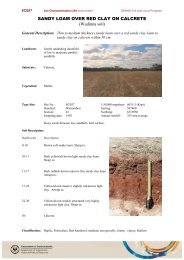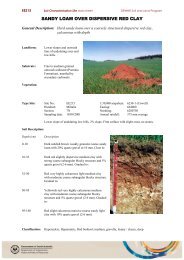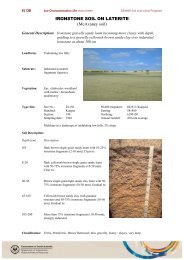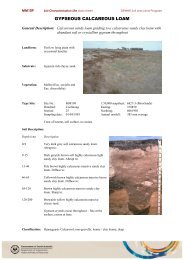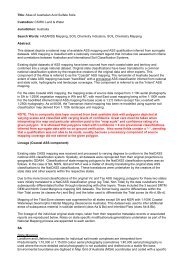You also want an ePaper? Increase the reach of your titles
YUMPU automatically turns print PDFs into web optimized ePapers that Google loves.
1 SummaryThis document specifies the variables, codes and estimation procedures for the Australian SoilResource Information System (<strong>ASRIS</strong>). <strong>ASRIS</strong> has been developed to provide primary data on soiland land to meet the demands of a broad range of users including natural resource managers,educational institutions, planners, researchers, and community groups. The online systemprovides access to the best available soil and land resource information in a consistent formatacross the country – the level of detail depends on the survey coverage in each region. Morespecifically, <strong>ASRIS</strong> provides the following.• A spatial hierarchy of land-unit tracts with seven main levels of generalization (Figure 1).The upper two levels (L1–L2) provide descriptions of soils and landscapes across thecomplete continent while the lower levels (L3–L6) provide more detailed information,particularly on soil properties, for areas where mapping has been completed. The lowestlevel (L7) relates to an individual site in the field. The system can also be used to providesummaries of soil and landscape properties for a range of higher level stratifications ofthe country (e.g. Interim Biogeographic Regions of Australia (v5.1), Groundwater FlowSystems, and catchment management boundaries).• A consistent set of land qualities. These are described for land-unit tracts. Descriptionsfrom the lowest level are used to generate summaries for higher-level units. The landqualities relate to the intrinsic capability of land to support various land uses – the landqualities relate to soil depth, water storage, permeability, fertility, and erodibility.• A soil profile database. These fully characterized sites are representative of significantareas and environments. The data provide catchment managers with primaryinformation for improving land literacy in their region, and natural resource specialistswith a fundamental data set for assessing and predicting resource condition.• Estimates of uncertainty. These are provided with most data held within <strong>ASRIS</strong>. Adistinction is made between attribute uncertainty (due to the measurement orestimation procedure for a given soil material) and spatial uncertainty (due to thenatural variation across a landscape). The estimates are provided to encourage formalanalysis of the uncertainty of predictions generated using <strong>ASRIS</strong> data (e.g. crop yield,runoff, land suitability for a range of purposes).<strong>ASRIS</strong> is being progressively updated as new data become available. The Physiographic Regionsof Australia (Pain et al. 2011) now provides the upper levels (L1–L2) of the hierarchy. There willalways be restricted coverage at lower levels where detailed data does not exist. <strong>ASRIS</strong> can beaccessed online at www.asris.csiro.au.1




